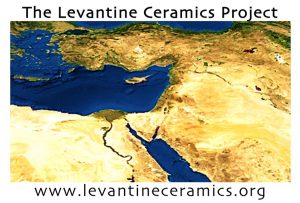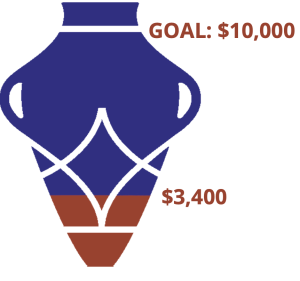
MARCH MADNESS CHALLENGE 2022: FILL THE POTS
The LCP’s mission

Why ceramics? Because they comprise the most abundant category of remains found throughout the Near East, and because every excavator must contend with identifying and publishing them, yet the mode by which that is done has not changed in a substantive way since William Flinders Petrie began working in 1880. Constant excavation since then has created unthinkable quantities of data, all disseminated via print (and now digitized versions of print) publications. Print is excellent for many things – but it is remarkably ill-suited for fast exchange of information, collaborative study, and especially the rapid recording of new or changing ideas. Archaeology is a field that is always in a mode of discovery; we need tools that can keep up, that allow us to bring new material into dialogue with that long known, are easy to use, foster sharing, and enable us to readily learn from one other. The LCP is such a tool.
The LCP inspires new questions, and gives us the tools to answer them: Hard borders, civil wars, intractable terrain – these are facts on the ground across the landscapes of the Levant. Swaths of territory that are invisible or inaccessible today were zones of habitation and connection in the past. Archaeological survey and fieldwork fill in the blanks, allow us to see what was, imagine different realities. This is why we pursue such work; this is one of the best rationales for its value now and in the future. The LCP helps deliver on that lofty promise. Four examples of regions, activities, lives able to be seen, mapped, and linked to a wider world via pottery on the LCP:
- the eastern desert of Egypt: >200 vessels from 25+ already on the LCP with another 1000+ from 200 sites, thanks to integration with the EU/CNRS Desert Networks Project (scheduled for submission this summer).
- the Hauran of southern Syria: >1000 vessels from 50+ sites, dating from 1200 BCE-200 CE, from the Lajāʾ survey (2003–2009), the Qarrāṣa excavations (2008–2011), plus published and unpublished data from the French Archaeological Mission to Southern Syria, thanks to Jérôme Rohmer’s 2020 Hauran VI. D’Aram à Rome. La Syrie du Sud de l’âge due Fer à l’annexion romaine (XIIe siècle av. J.-C. – Ier siècle apr. J.C.).
- Rough Cilicia, Turkey: ~200 vessels from 40+ sites, from Nicholas Rauh’s Rough Cilicia Archaeological Survey Project (1996-2011).
- the maritime networks linking northern and southern Cyprus with the northern Levant: 400+ vessels dating from the Middle Bronze – Iron Ages, from Cyprus and sites in Cilicia and coastal Syria, including 250+ vessels from Tell Tweini in northern Syria, excavated by the University of Leuven from 1999-2007.
The LCP advances ASOR Strategic Plan and Goals by providing easy and open access to new information: The LCP provides quick access to new finds and current ideas, and helps American researchers connect with foreign scholars. Most LCP contributors are based in Europe, Turkey, Cyprus, Lebanon, Jordan, Israel, and Egypt, and are affiliated with foreign research universities or institutes. Not all users are are members of ASOR, yet their enthusiastic embrace of the LCP helps ASOR members stay abreast of work they would otherwise have a hard time accessing or even knowing about in the first place. Keeping the LCP free and open access is critical; if there was a members-only access policy, we would lose the input of most of these foreign contributors. The LCP provides assistance for ASOR-affiliated excavators: LCP interns work with ASOR-affiliated excavators to prepare and submit their pottery to the site. Using the LCP, interns also regularly make connections with material from other sites that excavators had not known about. This has the double benefit of deepening knowledge from excavated material as well as disseminating new information to scholars and students around the world.
The LCP brings disparate, hard-to-find data together, able to be mapped, studied, arranged and re-arranged for connections, ideas, insights. It is worth emphasizing that much of this material crosses borders and links regions that are currently impassible. All appear on the LCP thanks to ASOR’s neutrality as an American-based organization. In this way, ASOR helps frame a vision of the Levant that rises above the current political fray, and enables a new generation to ask and answer new questions, to understand the past – and perhaps therefore also the future – in different ways.
